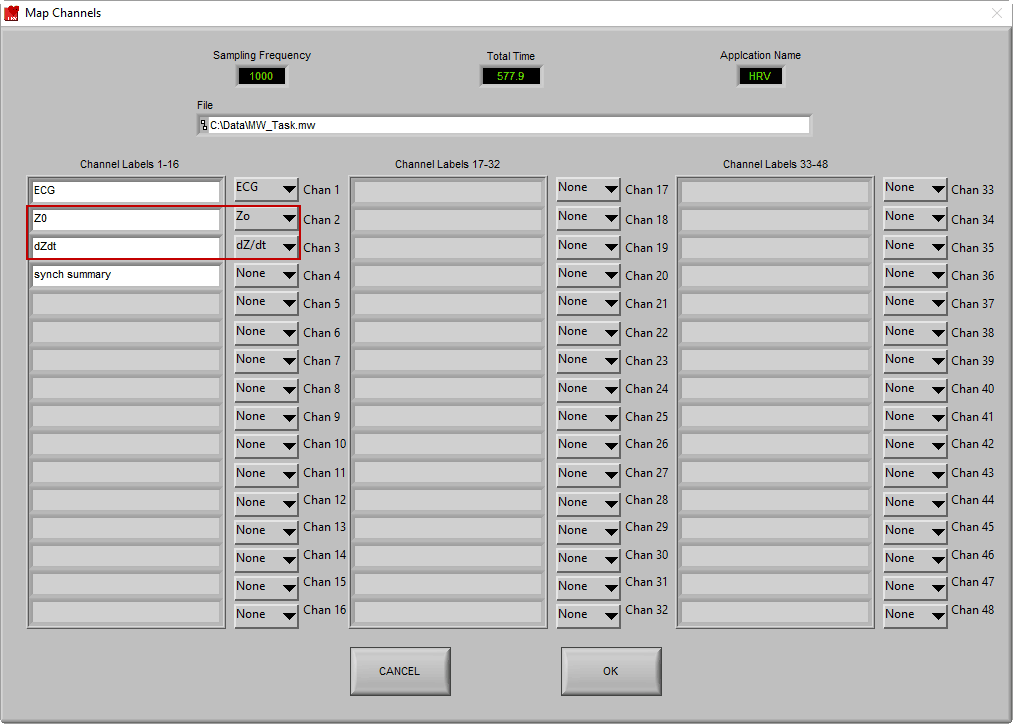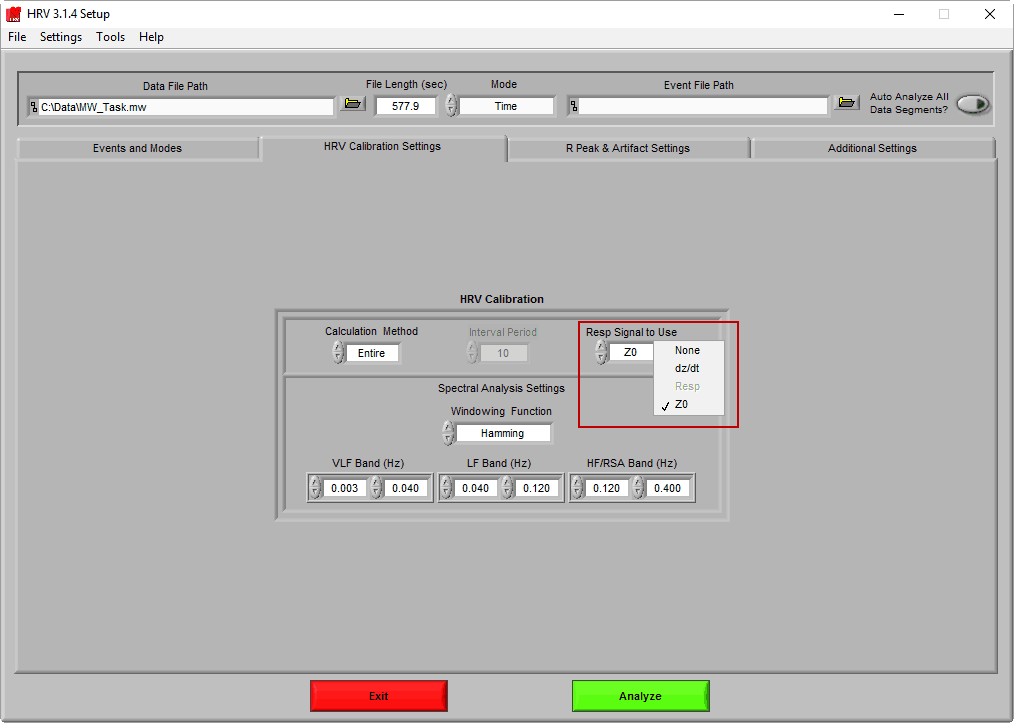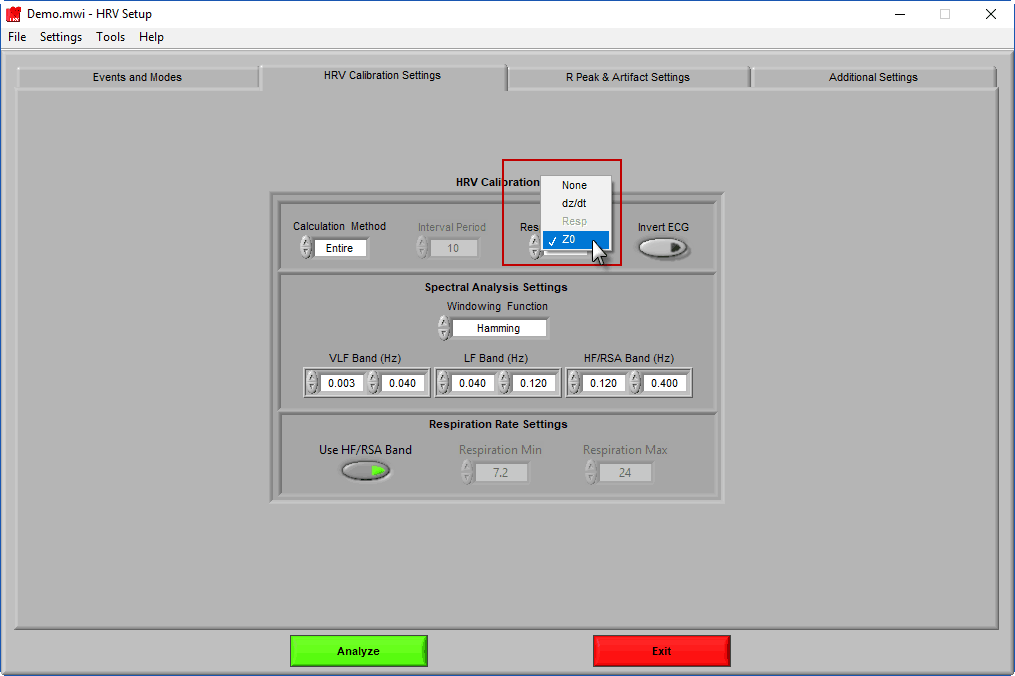Select analysis version to view the applicable content:
For our final entry in the series on cardiac impedance, we are going to step back from analyzing the impedance signal directly and examine another way in which it can be used – to provide an index of respiration.
Why this is important
To get a full picture of autonomic balance/control, you need to examine both the sympathetic and parasympathetic nervous system. We have learned that cardiac impedance can be used to determine sympathetic nervous system control. Respiration has been identified as a contributing factor to respiratory sinus arrhythmia (RSA) which is a known index of parasympathetic nervous system influence.
When collecting cardiac impedance, you should also be collecting ECG. If we are able to extract respiration from the cardiac impedance signal, then we have all of the necessary components to examine both sides of the autonomic nervous system by only collecting impedance and ECG. Considering the number of sensors required to collect these signals (a total of 7 spot electrodes), it is nice (from a subject-comfort perspective) to derive respiration instead of using a respiration belt or other sensor to measure it directly.
Additionally, respiration can be used as a means for artifact detection when analyzing electrodermal activity (EDA).
How it works
Respiration is most identifiable in the Zo signal. The Zo signal is low pass filtered and linearly detrended to remove the DC offset and any high frequency noise. Once this is done, the frequency content of this signal correlates closely with actual respiration.
Since dZ/dt is the derivative of Zo, we can integrate the dZ/dt signal and perform the same procedure to extract respiration from it. If Zo is recorded, however, it is better to use it directly.
To use either cardiac impedance signal as a respiration source in HRV or EDA, you need to first map the channels
and then set Resp Signal to Use to the desired signal
and then set Resp Signal to Use to the desired signal
To learn more about the specifics and comparison with actual respiration data, check out this publication.
Throughout this series of posts, we have shown cardiac impedance is an important physiologic signal to collect for analysis of sympathetic nervous system control. With the ability to extract respiration, cardiac impedance becomes important for investigation of the parasympathetic nervous system as well. You should now be ready to effectively collect and analyze the cardiac impedance signal and take full advantage of the insights it provides.




